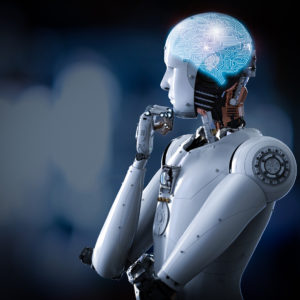I’m a data scientist, so this may come as a surprise when I say: AI is not 100 percent ready for education.
If you put a bunch of AI engineers in a room, our conversation will inevitably circle back to ethics and social implications. We argue about which kind of applications are ready for AI and the complexities involved in the implementation process. And yet, despite heated and diametrically opposed opinions on specific applications, every data scientist I know is 100 percent committed to following the standard to do no harm.
The basic principle is that when an application has little risk to an individual, should the AI make an incorrect decision, then we are relatively certain that building AI elements into the process is okay. When there is a high risk of an outcome being detrimental to an individual, then AI should not be involved or should only be involved if there is strict human supervision. Regardless of the risk factor, human oversight should be a requirement when developing and implementing AI.
It is fine when an AI-enabled learning software has selected specific material to assist the teacher in helping fill a learning gap. Identifying grammar errors and providing guidance for proper citation is an excellent application of AI. Education is clamoring for these kinds of efficiencies, however, AI will probably never be the teacher because teaching is relational.
Education is only ready for AI if it is supervised by humans. That statement might seem contradictory given I head AI development in an ed-tech company where AI is integrated into grading workflow and writing support. Let me explain why it’s not.
At our company, AI is supportive of education technology but not required in the technology operation. For example, one of our education applications helps faculty grade assignments and exams more quickly and consistently. It can be operated with or without AI-enabled features. With AI operating, our application can recognize similar answers and group them. Then, similar answers are scored at one time without having to do so over and over.
The safest and most helpful applications of AI, even those outside of education, function similarly. When it comes to learning, AI does not make decisions about grades and outcomes; it does not evaluate an individual; it is part of a workflow overseen by humans. We have developed other products where AI is process-oriented. For example, one of our products compares student writing and gives back recommendations on how to improve. Students get feedback on their writing, on-demand. That’s powerful.
AI can work more quickly than a human and it never tires. It learns from what it has seen and will respond as many times as a student asks. AI combs through the data of one person and compares it to the data of many. If a human did this, it would take a lifetime of training and then hours to process. And like humans, AI gets better at seeing patterns so it improves with practice.
I am most excited about the ways AI can ease busy work for teachers because when there is less busywork, teachers have more time. When they have more time, they can interact more with their students. My job and the job of my team is to weave in AI-guided decisions in the smallest of ways that buyback hours so that teachers can drive those interactive learning moments.
We have adopted standards specific to the development and use of AI in educational applications. At the top is: “AI should help improve learning outcomes and promote and protect academic integrity.” This means we strive to increase the opportunity for human, teacher-to-student interactions because this is when learning occurs. There is a magical moment when a student takes in what the teacher has said or written, internalizes it, and connects it to an action they have already done. The student realizes that there is a new perspective, a more accurate answer, a different angle, or they simply pause to explore their own thoughts on the matter, and thus, they learn.
Education is ready for AI–but only when the standard of implementing AI includes human oversight–is the AI ready for education.

